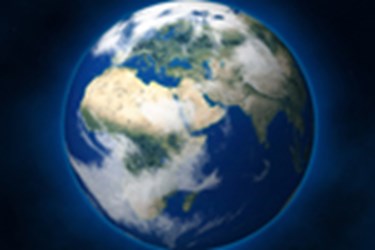Human-Made VLF 'Bubble' Protecting Earth From Space Radiation
By Jof Enriquez,
Follow me on Twitter @jofenriq

Scientists have discovered that very low frequency (VLF) radio waves emanating from ground stations have formed a barrier around Earth against natural high-energy particle radiation in space, which can damage orbiting satellites and disrupt global positioning system (GPS) communications.
VLF signals propagate as ground waves undeterred by mountain ranges, and are used for communicating with submarines since they can penetrate deep into the ocean. Also, VLF waves travel outwards to the natural radiation belts around the Earth, where they interact with high-energy radiation particles. Scientists believe that this interaction, over time, has created a shield or bubble that protects the Earth from space radiation.
“A number of experiments and observations have figured out that, under the right conditions, radio communications signals in the VLF frequency range can in fact affect the properties of the high-energy radiation environment around the Earth,” said Phil Erickson, assistant director at the MIT Haystack Observatory, Westford, Mass., in a press release.
Scientists have noted that the margins of the VLF bubble almost match the inner boundary of Earth's radiation belts, which are swarming with high-energy electrons and other charged particles.
According to Dan Baker, director of the University of Colorado’s Laboratory for Atmospheric and Space Physics in Boulder, this boundary would likely stretch closer to Earth if VLF waves were not transmitted. Data from NASA’s Van Allen Probes spacecraft showed that the boundary was closer to Earth back in the 1960s, when VLF signals were still limited.
"This barrier for the ultra-fast electrons is a remarkable feature of the belts," Baker said in a previous announcement. "We're able to study it for the first time, because we never had such accurate measurements of these high-energy electrons before."
Scientists believe that VLF waves could one day be used to remove excess radiation — such as that produced by a stream of charged particles from solar wind, or during a coronal mass ejection – from Earth's immediate space environment, preventing it from possibly frying satellite electronics or wiping out power grids. Further study on the dynamics of near-earth space could help scientists and engineers design and protect satellites and spacecraft from the dangers of space weather.
VLF transmission is one of a handful of athropogenic (caused or influenced by human activity) factors affecting space weather discussed by the researchers in an article published online in Space Science Reviews.
